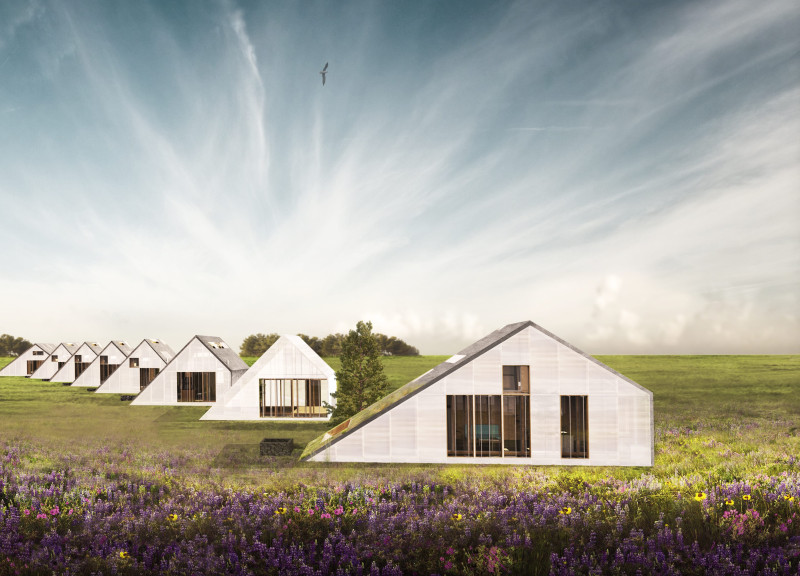5 key facts about this project
The Pāvilosta Poet Huts are located in Pavilosta, Latvia, designed to blend with the surrounding nature while serving multiple purposes. This project consists of nine distinct huts that offer accommodations for various group sizes, along with communal spaces for dining and gathering. Drawing inspiration from the arrangement of trees in a forest, the design allows the huts to fit comfortably into the landscape while taking into account factors such as wind direction and sunlight exposure.
Architectural Design
The huts are oriented along a north-east/south-west axis, which helps to reduce the effects of strong winds coming from the south-west. This strategic positioning improves comfort for occupants and enhances the views of the natural surroundings. The layout promotes interaction among guests while still providing privacy within individual spaces.
Material Use and Structure
Each hut features a double-skin façade that combines polycarbonate panels on the outside with glass and timber panels on the inside. This design creates an insulating air pocket that helps regulate temperature, keeping the huts warm in the winter and cool in the summer. The thoughtful selection of materials is important for the overall sustainability of the project, ensuring it can withstand local climate conditions.
Ventilation and Light
Natural light and airflow are key components of the design, accomplished through the use of skylights and openings. These features allow for fresh air to circulate throughout the huts, improving the indoor environment and connecting residents to the outside. The carefully chosen placements of these windows ensure that the interiors remain bright and inviting at different times of the day.
The layout includes not only private huts but also communal areas and a greenhouse. Spaces designated for meditation and gathering promote a sense of community among visitors. These design elements encourage engagement with both the architecture itself and the surrounding natural environment, enhancing the overall experience.






































